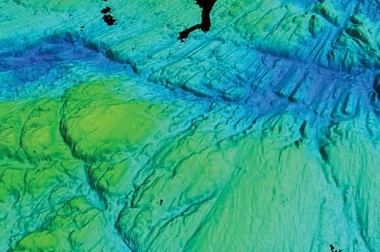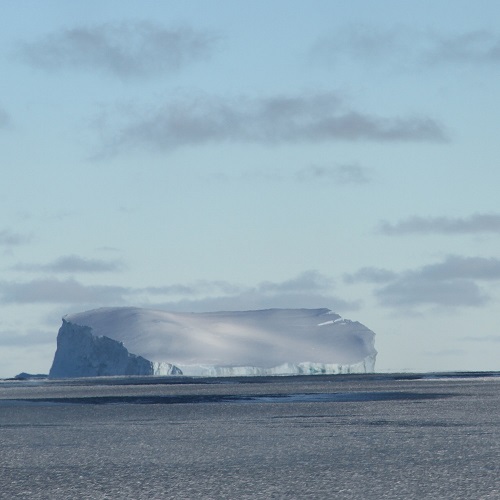Update
It’s a good thing we left early. We just missed a storm about a day or
so behind us. We can feel some of the effects rocking and rolling on the
edge of it out here, but it’s not nearly as bad as when we were
transiting to Antarctica. This satellite image is a few days old and not
quite to scale (we’re much smaller than the text and arrow) but I think
it gets the point across.

A Closer Look at Glaciers
Over the course of our expedition, we’ve collected data in the regions
of four different Antarctic glaciers: Dibble glacier, Totten glacier,
Moscow University glacier/ice shelf and Frost glacier.


Despite, or rather because of their heavy weight, glaciers actually
flow and move, grinding up rocks and shaping valleys as they slide along
the ground. Glaciers move by basal sliding. The weight of the glacier
creates high pressure and friction which can cause some of the ice to
melt. This liquid water lubricates the bottom of glaciers, allowing
glaciers to slide at their base. In Antarctica, using bathymetry we can
see evidence of past glacier movement, like melt water channels and
areas of sediment pushed by the glaciers, on the ocean bottom.

As glaciers slide off the continent into the ocean they become known as
ice shelves. Glaciers can also break or calve, forming icebergs. If an
iceberg is over 10 knots across, they get their own formal name from
the National Ice Center.

Try it at home
Make your own edible glacier (glacial ice cream sundae)
You’ll need: blue jell-o, vanilla ice cream, cool whip or whipped cream, crumbled oreo cookies, a clear cup and a spoon.
- Sprinkle some crumbled oreo cook on the bottom of your clear up. This is the rocks and dirt of the ground.
- Lay down a layer of blue jell-o. This is the dense ice formed from hundreds to thousands of years of condensed snow. It looks blue because it is so dense it refracts light differently than uncompressed white looking ice.
- Lay down a layer of ice cream. This is snow that’s fallen tens of years ago. It’s dense, but not quite as dense as the blue ice yet. It will eventually turn into that dense blue ice!
- Lay down a thin layer of cool whip/whip cream. This is light, fluffy, freshly fallen snow. It contains lots of air, keeping it light weight and giving it a white color. Eventually it will be compressed into thicker ice and eventually dense blue ice.
- Sprinkle some oreo cookie “rocks” in with the layer. Sometimes dirt and rocks get caught in the glacier and can get carried hundreds of miles away as the glacier moves.
- Now that you have a complete glacier, let it “slide” into your mouth!

A small town-sized iceberg with a distinct line of trapped sediment and debris. Photo by Guy Williams.


Comments